What Is Swooping In Skydiving?
Skydiving Tips
Posted by: Wisconsin Skydiving Center 6 months ago
‘Swooping’ sounds like something out of a superhero movie, right? If you want to consider skydivers to be superheroes, we won’t argue with you! What is swooping in skydiving? It’s a super fascinating canopy-piloting discipline that many skydivers get into. It entails flying the parachute very close to the ground at very high speeds – a speed-induced landing, if you will. Swooping truly takes canopy piloting to the next level and pushes the boundaries of what’s possible in the sky.
If you’re considering learning how to swoop, keep reading. We’ll take a brief look at skydiving swooping basics while answering some commonly asked questions. The first step to learning how to swoop is to do a tandem skydive and achieve your solo skydiving license (we’re lookin’ at you)!
What Is A Skydiving Swooping Maneuver?
A skydiving swooping maneuver allows skydivers to generate lift under their canopy while increasing their forward speed. How do you swoop when skydiving? With an intentional and calculated combination of input from steering toggles, risers, and your harness. We don’t want to get into the specifics tooooo much (that’s what canopy coaches are for), but trust us when we say swooping is not for the faint of heart.
During a swoop, canopy control is paramount – you have to be one with your wing. Having a perfect combination of skill, timing, and judgment allows skydivers to execute the swoop safely and accurately. Although we just described swooping in a few sentences, it’s critical to understand and respect the complexities of swooping; it’s not a simple or easy feat.
What Is A Swooper In Skydiving?
Skydivers who initiate velocity-driven landings are called swoopers. Swoops are considered high-performance and these jumpers typically have a landing area designated specifically for them. These landing areas may have ponds, innovatively called “swoop ponds,” that swoopers practice zooming across while dipping their toes in the water. It’s common for a jumper to walk in with wet feet and hear, “Duuuude! That was a sick toe drag!” Or … if they carry in a wet canopy, “Dude … how’s the pond taste?”
There are skydiving camps and courses specifically curated to help swoopers advance their skillsets. Swoopers are the epitome of dedication, passion, and precision. They’re laser-focused on mastering the art of swooping, they approach the challenge with determination, and they love going fast!
Skydiving Swooping Accidents, How Do They Happen?
In the exhilarating world of skydiving, safety is paramount. Of course, accidents can and do happen. Why? Because we’re humans taking part in an extreme sport. There has been an immense number of technological advancements in skydiving gear (we are so thankful for our AADs and RSLs!), and the majority of skydiving accidents are a result of human error, which is why we push the notion of safety-minded progressions.
Swooping accidents are most commonly the result of a swooper misjudging their distance from the ground. This is a testament to why being confident (NOT cocky) in flying ability is absolutely vital.
A less common accident that can occur during a swoop is an AAD activation. An Automatic Activation Device (AAD) is designed to deploy the reserve canopy if the device deems the jumper to be too low while too fast (indicating they’re still in freefall). If the swooper does not have their AAD set to the correct parameters, the reserve canopy can deploy (alongside the main canopy that is already out) during landing, which is extremely dangerous. Both of these possibilities can be eliminated by not overstepping personal limits and properly understanding the specifications of the gear.
Staying vigilant and intentionally veering away from complacency is a fundamental skill all skydivers should have!
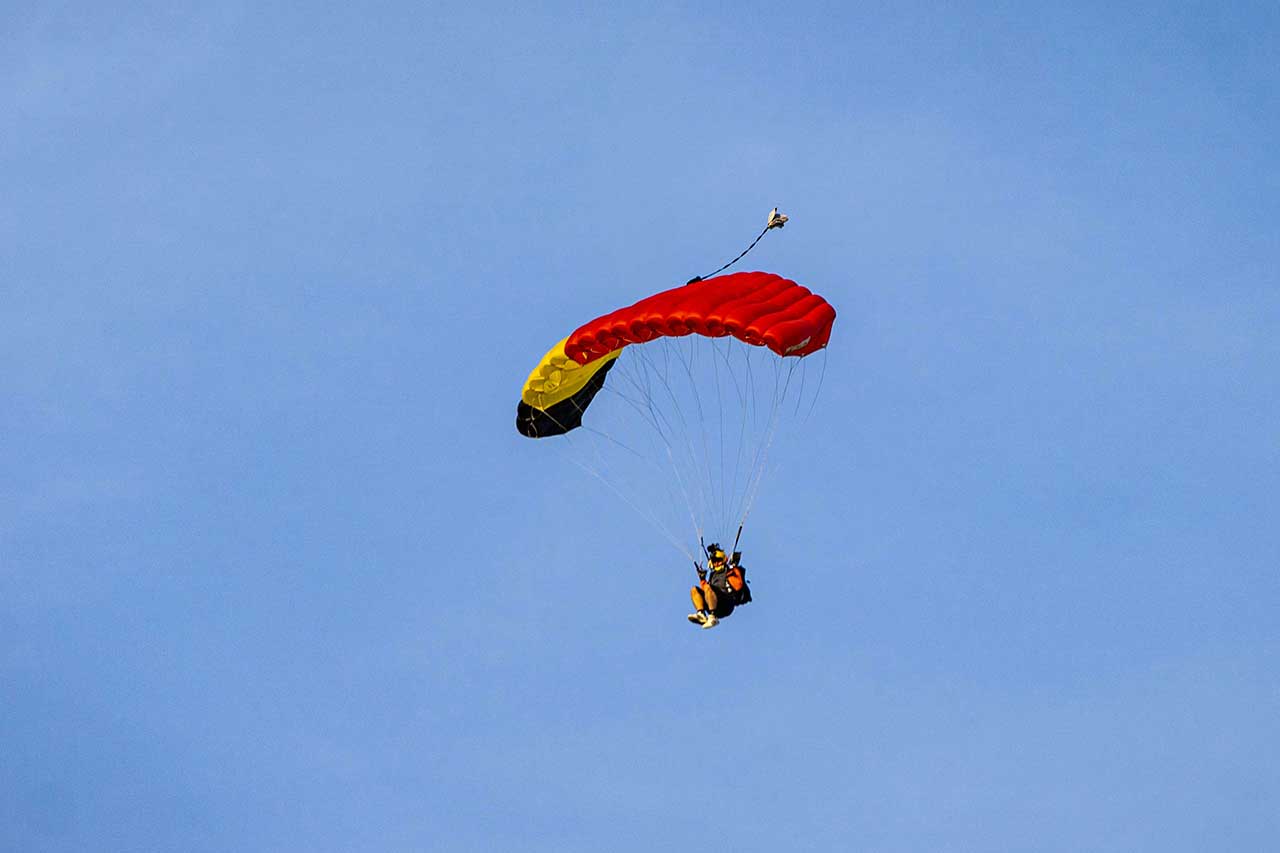
Common Questions About Swooping In Skydiving
Below are commonly asked questions and answers about swooping. As with everything in skydiving, put safety first and double check any doubts or inquiries you have about progression with an instructor, or in this case, a canopy coach who is experienced in swooping.
- What basic skills should I master before attempting swooping?
If you’re wondering, “How do I start learning swooping safely?” We want to thank you! Prioritizing safety in progression through the sport makes all the difference.
Before you start thinking about swooping, you should have an excessively high level of canopy controllability, a solid understanding of canopy flight dynamics, and a master-level sight picture. On top of these general skills, it’s critical to have a humble attitude and know when to bail out. We highly (HIGHLY) suggest getting in kahoots with a professional canopy coach who is an expert in swooping to guide and mentor you throughout your progression – their knowledge will be priceless!
- What are the risks associated with swooping, and how can I minimize them?
The most significant risk associated with swooping is contact with the ground. Because swoopers intentionally fly at high speeds very close to the ground, it’s critical to know your limits, understand how to steadily push them, and to not surpass preset boundaries for yourself. As always, canopy collisions can happen while flying a canopy, and to avoid this, ALWAYS have your head on a swivel.
- Can anyone learn to swoop, or is it suited for experienced skydivers only?
In order to learn how to swoop, you must be an experienced skydiver. Once you earn your first solo skydiving license (the USPA A-license), you’re able to progress more in the sport!
- Are there specific courses or certifications for swooping?
Yep! In order for you to gain your USPA B-license, you must complete a canopy course. Canopy courses are taught by certified canopy instructors and are focused on teaching skydivers how to safely and effectively operate their canopies.
If a skydiver decides to pursue swooping with a safety-first mindset, they will seek the guidance of a canopy coach who specializes in swooping! These instructors are qualified to efficiently answer questions like, “What are common mistakes to avoid when learning swooping?” And, “What equipment is recommended for swooping?” Along with so many more!
- How does swoop flying differ from regular skydiving?
Swoopers purposefully increase speed while landing through different inputs and turns, while a ‘regular’ skydiving landing is flown straight in. To put it very simply: Those landing regularly just want to land, while swoopers live for dancing across the ground and then coming to a stop.
Swooping is a beautifully challenging and rewarding discipline when properly pursued. If you’re ready to begin your skydiving journey – book your tandem jump today!
Categories:
You May Be Interested In:
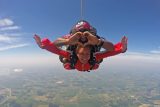
23 of the Best Skydiving Quotes and Captions for Social Media
5 months ago by Wisconsin Skydiving Center
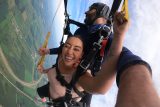
Why is Starting Out Tandem Skydiving a Good Idea?
1 year ago by Wisconsin Skydiving Center
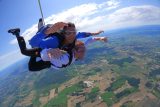
Should You Tip Your Skydiving Instructor?
1 year ago by Wisconsin Skydiving Center
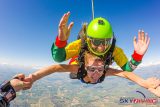
Can You Skydive While Drunk or High?
2 years ago by Wisconsin Skydiving Center